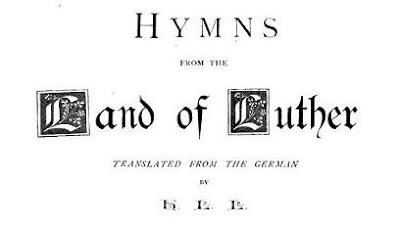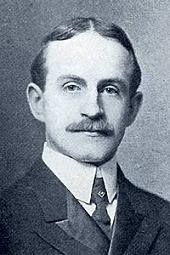 Horatio Richmond Palmer (April 26, 1834 - November 15, 1907) was born in upstate New York, where he first sang at age seven in the church choir his father conducted. He later lived in the town of Rushford, where he first attended, then taught at the Rushford Academy of Music.
Horatio Richmond Palmer (April 26, 1834 - November 15, 1907) was born in upstate New York, where he first sang at age seven in the church choir his father conducted. He later lived in the town of Rushford, where he first attended, then taught at the Rushford Academy of Music.He later lived in Chicago and New York City, where he directed church choirs in addition to teaching and composing music. He wrote some texts also, but mostly tunes. He reportedly edited about fifty collections of hymns and gospel songs, including The Standard (1872) and Palmer's Songs of Love for the Bible School (1874), and also wrote popular textbooks on music instruction.
Under his leadership, the Church Choral Union, a federation of church choir singers in New York City drawn from more than two hundred congregations. Palmer supervised the teaching of music classes to the members. One of their combined concerts at the original Madison Square Garden featured a choir of nearly four thousand singers. The Choral Union then became the title of a popular 1884 book of music instruction by Palmer (subtitled An Improved Text Book in the First Principles of Singing). The Church Choral Union expanded to other cities around the country as well.
This song with a tune by Palmer is still remembered by many, and surely still sung. It begins with a story from Mark 4:35-41, of the disciples caught in a tempest at sea, then broadens the theme to our own lives, challenged by the metaphorical storms we face. Author Mary Ann Baker was a Sunday School teacher at the Second Baptist Church in Chicago when Palmer was the music director there, and he asked her to write some song texts based on her lessons.
Master, the tempest is raging!
The billows are tossing high!
The sky is o’erclouded with shadow,
No shelter or help is nigh;
Carest thou not that we perish?
How canst thou lie asleep,
When each moment so madly is threatening
A grave in the angry deep?
Refrain
The winds and the waves shall obey thy will,
Peace, be still!
Whether the wrath of the storm tossed sea,
Or sorrows or fears, or whatever it be
No waters can swallow the ship where lies
The Ruler of ocean, and earth, and skies;
They all shall sweetly obey thy will,
Peace, be still! Peace, be still!
They all shall sweetly obey thy will,
Peace, peace, be still!
Jesus, with anguish of spirit
I bow in my grief today;
The depths of my sad heart are troubled
Oh, waken and save, I pray!
Torrents of fear and of anguish
Sweep o’er my sinking soul;
And I perish! I perish! dear Savior,
Oh, hasten, and take control.
Refrain
Jesus, the terror is over,
The elements sweetly rest;
Earth’s sun in the calm lake is mirrored,
And heaven’s within my breast;
Linger, O blessèd Redeemer!
Leave me alone no more;
And with joy I shall make the blest harbor,
And rest on the blissful shore.
Refrain
Mary A. Baker, 1874; alt.
Tune: PEACE, BE STILL (Irregular with refrain)
Horatio R. Palmer, 1874
His was a magnetic personality that enabled him to impart his enthusiasm to choruses. What a pleasure it always was to meet him! How his keen eyes and earnest, smiling expression held you as with a grip and left you with a feeling akin to his own enthusiasm.
P.S. The painting below, Jesus Stilling the Tempest (Jésus calmant la tempête) is by the French watercolor artist James Jacques Joseph Tissot (1836 - 1902).













